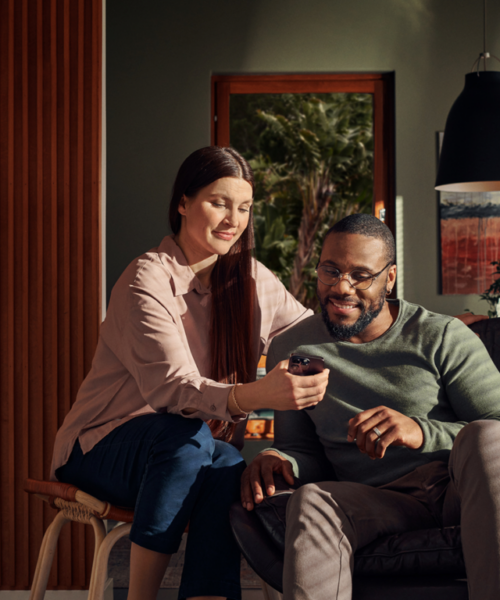How smart locks improve security

In our recent blog post, we talked about smart locking and how digital and mobile smart locking systems benefit security while minimizing administration procedures and costs.
In this blog post, we’ll dive a little deeper into the security aspect and find out exactly how smart locking systems do a better job of keeping your properties safe than mechanical systems.
First of all, let’s take a look at the key itself. Mechanical keys are very easy to copy as their ‘coding’ can be identified by the shape of the cuts on the key. The level of security related to a mechanical key can only be kept high as long as it remains in your possession. As soon as it is lost, the security level drops significantly. However, with digital keys, the locking system is based on strong digital authentication. The encryption cannot easily be read from the shape of the key. In the case of lost, stolen or unreturned keys, the access rights can be quickly and easily removed and re-issued to a new key using a programming device to ensure the highest levels of security throughout the property are maintained.
The lock cylinders and keys are fully programmable. Access rights are managed, and the locks and keys are updated using cloud-based software that uses a separate programming key for data encryption. Administrators can view up-to-date information on the keys, locks and access rights within the system at all times.
Tracking misuse
Another way of ensuring security is to check the usage of the keys. Digital lock cylinders create an access log that shows every time someone opens or attempts to open the lock. Tracking the use of keys makes it easy to investigate the misuse of common spaces and remove access rights to those keys. Some digital locking systems are battery free and do not rely on the power grid, ensuring that the system is always operational. Audit trail reports are GDPR compliant and are only accessible by authorized personnel.
Benefits for all kinds of properties
- In student housing, the access rights of any key can be quickly changed when a new student moves in or a common facility is re-purposed. And, if a key gets lost, its access rights are removed, and a new key can be programmed in only a few seconds ensuring security remains consistent year after year.
- In residential properties, it’s not just the security of private apartments that needs to be taken into account. It also affects the central entry point, common areas, security locks, elevator key switches and padlocks. Digital locking systems provide optimized security for all entry points. And, for example, during renovation projects, access rights can be given to 3rd parties and then removed when the work has been completed.
- In properties that need high levels of security, such as schools, museums and other public facilities, mechanical locking systems must be supplemented with an expensive access control system. Digital locking systems that also have a remotely controlled access management system in one package are available on the market. Selected doors can be installed with remote-controlled lock cylinders, RFID and PIN code readers and time-controlled electronic locks. For example, the sports facilities of a school can be scheduled to open with a PIN code during a fixed time period.The solution can easily be expanded to cover many different types of entry points without heavy modifications to the existing infrastructure.
- Hospitals present a particular challenge for locking systems. Numerous members of staff with varying responsibilities are all trying to coexist with a significant number of key access points. Some hospital employees work within a limited area – such as a single unit or floor – while others move around the premises constantly. With a digital locking system, access rights can be assigned to specific personnel needs. Every nurse, doctor or other staff member has a programmed digital key that gives them access to the facilities they need while simultaneously restricting access to other areas.
- In offices, there is a heavy flow of people and multiple layers of security, and work responsibilities and facilities frequently change. With digital locking systems, the risks of unauthorized access or the threat of a key being copied are eliminated and access rights to lost keys can be quickly removed.
Mobile locking systems
The security risks related to physical keys in mechanical locking systems have also been eliminated by using a mobile locking system. Utility providers, such as power production and distribution companies, telecom network services, data centers, water treatment plants, property services and transportation services, regularly face the challenge of maintaining security while simultaneously managing numerous sites and vast numbers of locks. With a mobile locking system, a smartphone running an app is the key.
Access rights to all property locks can be remotely shared and multiple sites can be consolidated into one secure cloud-based software platform. This helps keep track of who has access to what doors/areas with features like time-restricted access, instant granting and revoking of access rights and real-time audit trail reports.
Tested and approved by security organizations
iLOQ’s product families are under constant development and testing in order to ensure that our operations meet the highest standards set by the security industry. We cooperate with leading specialists in the security sector. Approvals given to iLOQ by independent organizations are important indicators that prove the safety of our solutions.
Hopefully this post has given you a little insight into how smart locks improve security. To learn more, check our website, watch this video: https://www.youtube.com/watch?time_continue=6&v=63rK03DT5Jw or get in touch with our sales team to find out how you can maximize the security of your property while minimizing costs.




















